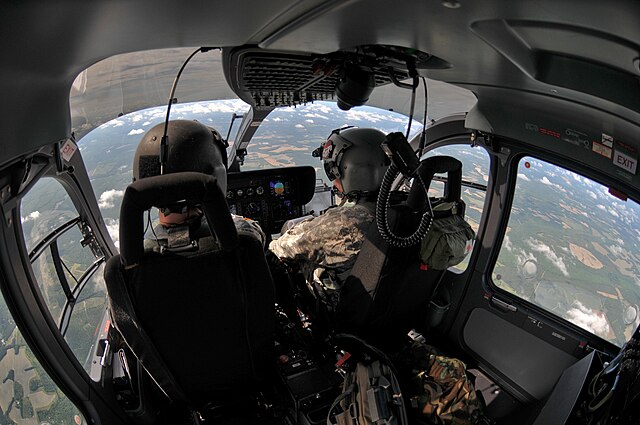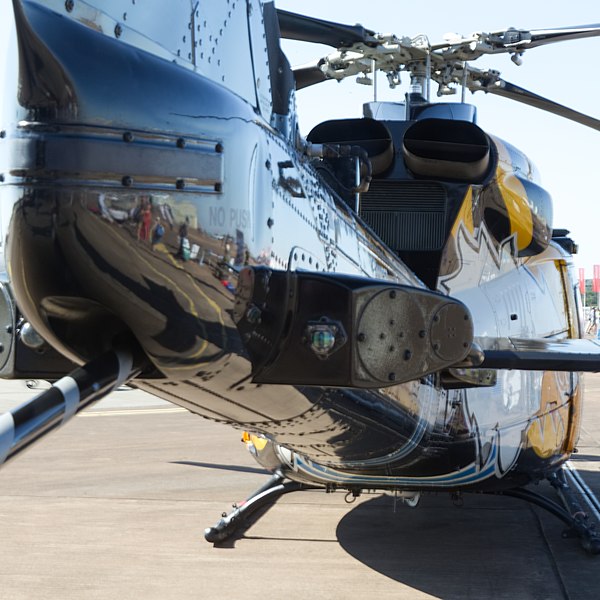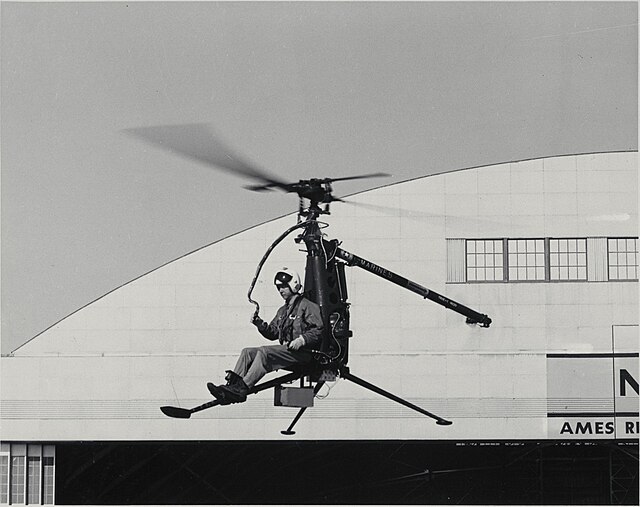NOTAR is a helicopter system which avoids the use of a tail rotor. It was developed by McDonnell Douglas Helicopter Systems. The system uses a fan inside the tail boom to build a high volume of low-pressure air, which exits through two slots and creates a boundary layer flow of air along the tailboom utilizing the Coandă effect. The boundary layer changes the direction of airflow around the tailboom, creating thrust opposite the motion imparted to the fuselage by the torque effect of the main rotor. Directional yaw control is gained through a vented, rotating drum at the end of the tailboom, called the direct jet thruster. Advocates of NOTAR assert that the system offers quieter and safer operation than a traditional tail rotor.
MD Explorer air ambulance
The Cierva W.9 showing the long tailboom from which the efflux from the engine-driven fan emerged from a directable vent on the left side at the tip of the tailboom
MD 900
MD Helicopters 520N NOTAR
A helicopter is a type of rotorcraft in which lift and thrust are supplied by horizontally spinning rotors. This allows the helicopter to take off and land vertically, to hover, and to fly forward, backward and laterally. These attributes allow helicopters to be used in congested or isolated areas where fixed-wing aircraft and many forms of short take-off and landing (STOL) or short take-off and vertical landing (STOVL) aircraft cannot perform without a runway.
A Bell 206 helicopter operated by the Los Angeles Police Department Air Support Division
Cabin view looking out from a helicopter in flight
Bell 412CF looking forward from the tail, showing its twin turbine endinge exhausts
1956 Hiller YROE-1 one-man "Rotorcycle" being tested at NASA Ames Research Center








